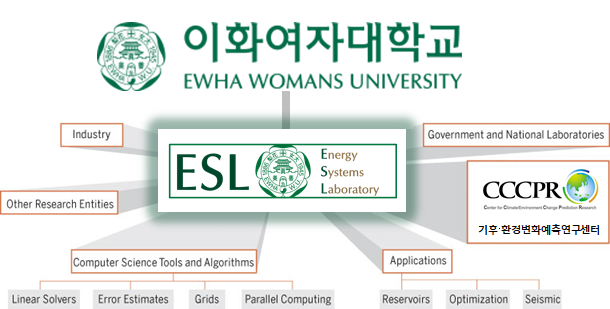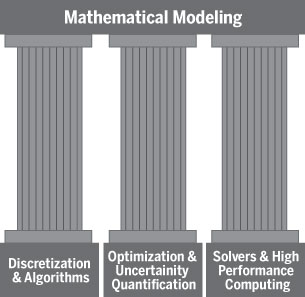† Research Vision & Goal

At the ESL, we actively work with academic and industrial collaborators throughout the world to deliver cutting edge scientific advancements in the form of toolsets for subsurface applications. Our research continually seeks to improve our physical understanding of subsurface phenomena using consistent mathematical modeling and advanced numerical solution techniques. We use high performance computing to reduce computational costs associated with complex models. Funds from our industries and national research agencies have helped us to develop our own parallel computing environment, which enables us to test and prove new concepts in advanced modeling and simulation.
In a rapidly changing world, the Energy Systems Laboratory is dedicated to developing solutions to tomorrow’s modeling challenges – today.

An accurate description of complex subsurface phenomena warrants understanding of the underlying physical processes using consistent mathematical modeling and robust numerical solution techniques. Such models require parameter estimation using novel
 history matching approaches to quantify the uncertainties associated with subsurface heterogeneities. ESL researchers collaborate with experts spanning across various disciplines to model flow and transport of fluids in reservoirs of varying complexities (heterogeneous media; fractured and vuggy) accounting for fluid phase behavior, geochemical reactions and geomechanical deformations (subsidence).
history matching approaches to quantify the uncertainties associated with subsurface heterogeneities. ESL researchers collaborate with experts spanning across various disciplines to model flow and transport of fluids in reservoirs of varying complexities (heterogeneous media; fractured and vuggy) accounting for fluid phase behavior, geochemical reactions and geomechanical deformations (subsidence).
These modeling advancements are implemented in industry-standard reservoir simulator, in-house reservoir optimization toolbox, or available as stand alone toolsets for specific applications. Our model developments assist industrial affiliates in their field deployment efforts.
